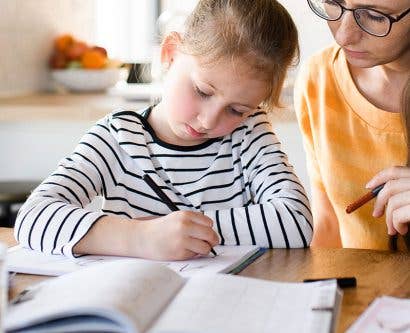Safeguarding Children Legislation: Guidance for Schools
If you work or volunteer with or around children, such as in a school setting, you have important safeguarding responsibilities. In order to properly fulfil your safeguarding duties, you need to understand what the law requires and keep up to date with any amendments or changes to it.
In order to make guidance as clear as possible, and to continually strengthen safeguarding procedures, the government frequently revisits and updates safeguarding statutory guidance documents. As a result, it can be difficult to keep track of new requirements and how they impact your role. In this article, we will provide a summary of key legislation and statutory safeguarding guidance for schools.
Need Safeguarding Training?
Our range of Safeguarding Training Courses aim to provide you with the required knowledge to carry out your work whilst meeting safeguarding training requirements. Take a look at our course library where you’ll find everything from Designated Safeguarding Lead to Harmful Sexual Behaviour in Schools.
Key Legislation in Schools
Working Together to Safeguard Children, one of the key statutory guidance documents for schools (which we shall look at later), defines safeguarding and promoting the welfare of children as:
- Providing help and support to meet the needs of children as soon as problems emerge.
- Protecting children from maltreatment, within and outside the home and online.
- Preventing impairment of children’s mental and physical health or development.
- Ensuring that children grow up in circumstances consistent with the provision of safe and effective care.
- Promoting the upbringing of children with their birth parents, or otherwise their family network wherever possible and where this is in the child’s best interest.
- Taking action to enable all children to have the best outcomes according to the outcomes set out in the Children’s Social Care National Framework.
There are several pieces of important legislation that contribute to the aims above, and influence policy and procedures regarding safeguarding children and young people. In the drop downs below, we give a brief summary of each law and its implications for safeguarding in schools.
The Children Act 1989
This was a revolutionary piece of legislation when it was implemented, as it completely reformed the law relating to children. This Act formed the basis of the current child protection system in England, and layed out the duties and responsibilities of all involved.
Some of the key principles that The Act established include:
- The concept of parental responsibility.
- The need for the child’s welfare to be the primary concern when a matter under the Act is before a court.
- The need to take the child’s feelings and wishes into account.
- The notion that children are best looked after by their family unless intervention in family life is essential.
The Act set out the duty of Local Authorities to promote and safeguard the welfare of children in their area. This included a responsibility to ‘promote the child’s educational achievement.’ It also introduced the concepts of children in need and children at risk of significant harm, which are key to ensuring children are appropriately safeguarded and given the level of support relevant to their needs.
A child in need is defined under the Children Act 1989 as: ‘a child who is unlikely to achieve or maintain a reasonable level of health or development, or whose health and development is likely to be significantly or further impaired, without the provision of services; or a child who is disabled.’
Significant harm takes into account many different factors, including:
- The severity of ill-treatment.
- The duration and frequency of abuse and/or neglect.
- The extent of pre-meditation.
- The ability of those with parental responsibility to protect the child.
Section 17 of the Act put a duty on the local authority to provide services to children in need in their area.
You may have heard the term section 47 with regards to child protection concerns. This refers to circumstances where a Local Authority is required to carry out an investigation as there is ‘reasonable cause to suspect that a child who lives, or is found, in their area is suffering, or is likely to suffer, significant harm’. The aim of this is to decide whether any action needs to be taken to safeguard the child. This is covered in Section 47 of the Children Act, hence the term.
The Act also covered the functions of Local Authorities in relation to looked after children. This included a duty to safeguard and promote the welfare of children in their care.
You can access the full act, which includes updates, here.
The Children Act 2004
This Act is a development from and amended the Children Act 1989. It provides the legal basis for how social services and other agencies deal with issues relating to children. The principles of the Act are to allow students to be healthy, remain safe, enjoy life, succeed and make a positive contribution.
Following the inquiry into the murder of Victoria Climbié by Lord Laming, the Children Act 2004 made a number of key changes to the child protection framework. (Further changes were then made by the Children and Social Work Act 2017, which amended the 2004 Act in a number of areas).
The Act reinforced that safeguarding children and promoting their welfare, is the responsibility of all people and organisations working with children.
According to a House of Commons briefing (2020), the 2004 Act (as amended), among other things:
- Places a duty on Local Authorities in England to make arrangements to promote cooperation with key partners and local agencies, in order to improve the wellbeing of children in that area.
- Places a duty on a range of agencies, including Local Authorities, the police and health services, to ensure that they consider the need to safeguard and promote the welfare of children when carrying out their functions.
- Establishes the roles and responsibilities of safeguarding partners (the local authority, NHS Clinical Commissioning Groups and the police), which are responsible for determining how safeguarding arrangements should work in their area
The Act also introduced the role of the Children’s Commissioner for England, who is responsible for championing children’s views and interests, in order to promote their welfare. The role’s statutory remit includes ‘understanding what children and young people think about things that affect them and encouraging decision makers to always take their best interests into account’.
Further information about the Children’s Commissioner, and their work, can be found here.
You can access the Children Act 2004 here.
Children and Social Work Act 2017
This Act is concerned with provision for looked after children, other provision in relation to the welfare of children, and the regulation of social workers.
It had four main purposes, which were:
- To improve decision making, and support for looked after and previously looked after children in England and Wales.
- To improve joint work at the local level to safeguard children, and enable better learning at the local and national levels to improve practice in child protection.
- To promote the safeguarding of children by providing for relationships and sex education in schools.
- To enable the establishment of a new regulatory regime specifically for the social work profession in England.
This Act includes the requirement for governing bodies in maintained schools and academies to designate a staff member of staff for previously looked after children. This designated staff member is responsible for promoting the education achievement of those previously looked after pupils within the school.
The Education Act 1996
This Act covered a wide range of content relating to statutory education including, amongst other things, defining the stages of education, compulsory school age, the function of the Secretary of State, and roles and responsibilities of the Local Authorities.
It also detailed the requirement that parents (or those with parental responsibility) must ensure that their children of compulsory school age receive appropriate full-time education suitable to their age, ability, aptitude and any special educational needs. This can be by regular attendance at school, at alternative provision, or otherwise (e.g. the parent can choose to educate their child at home).
You can access the full Act here.
The Education Act 2002
This legislation sets out duties and responsibilities for schools in regards to safeguarding children. The Act requires anyone working with children and young people to share information or concerns in relation to a child’s safety and wellbeing.
Section 175 of this Act sets out a requirement for maintained schools, including nursery, early years and further education providers, to make arrangements to safeguard and promote the welfare of children. The roles and responsibilities of schools have also been enhanced and reinforced through publications, such as Keeping Children Safe in Education (which we will look at later in the article).
These provisions are equally applicable to free schools, academies and private providers under the Education (Independent School Standards) Regulations 2014, and the Non-Maintained Special Schools (England) Regulations 2015.
The Education and Training (Welfare of Children) Act 2021 extends this welfare duty to 16-19 academies, special post-16 institutions and independent training providers.
You can access the full Act here.
Education and Skills Act 2008
This Act raised the minimum age at which children could leave education. It contains measures to encourage more young people to participate in learning post-16 and to achieve higher levels of skill and qualification.
The Act:
- Raised the age young people stay in education or training until from 16 to 18
- Places a duty on young people to participate and on parents to assist their children to participate in such education or training.
- Sets out duties on employers to release young people for the equivalent of one day a week to undertake training elsewhere (where the employer does not provide their own training)
- Requires Local Authorities to assess the education and training needs of young people aged 16-19 with special educational needs.
You can access the full Act here.
The Safeguarding Vulnerable Groups Act 2006
The Safeguarding Vulnerable Groups Act (SVGA) 2006 was passed to help avoid harm, or risk of harm, by preventing people who are deemed unsuitable to work with children and vulnerable adults from gaining access to them through their work. The Independent Safeguarding Authority was established as a result of this Act.
The Act ensures safer recruitment by providing a system for employers to check the suitability of potential employees or volunteers who will be working with children or vulnerable adults. It covers DBS requirements and essentially prevents unsuitable people from gaining access through work. This act clarifies what is considered regulated activity, and therefore subject to such checks.
You can access the full Act here.
The Equality Act 2010
The Equality Act brought together a range of anti-discriminatory laws, and covers all of Great Britain.
It offers protection from discrimination, harassment and victimisation for nine specific personal characteristics. These are known as protected characteristics under the law.
The nine protected characteristics are:
- Age.
- Disability.
- Gender reassignment.
- Marriage and civil partnership.
- Pregnancy and maternity.
- Race.
- Religion or belief.
- Sex.
- Sexual orientation.
The Act makes it unlawful for a school to discriminate against, harass or victimise a pupil or potential pupil. This includes:
- In relation to admissions.
- In the way that it provides education for pupils.
- In the way that it provides pupils access to any benefit, facility or service.
- By excluding a pupil or subjecting them to any other detriment.
Schools should also carefully consider how they are supporting their pupils and students with regard to particular protected characteristics. Provisions within the Act allow schools and colleges to take proportionate, positive action, to deal with particular disadvantages affecting students with a particular protected characteristic. This includes a duty to make reasonable adjustments for disabled children and young people (including those with long term conditions). Positive action could also include providing support for a group of students who share a protected characteristic.
State-funded schools and colleges are subject to The Public Sector Equality Duty (PSED) found in the Equality Act.
The PSED means that schools and colleges have a duty to
- Have due regard to the need to eliminate unlawful discrimination, harassment and victimisation (and any other conduct prohibited under the Equality Act).
- Advance equality of opportunity and foster good relations between those who share a relevant protected characteristic and those who do not.
This applies to all protected characteristics and equality implications should be taken into account whenever significant decisions are being made or policies developed. The PSED helps schools and colleges to focus on key issues of concern and improving pupil and student outcomes, being mindful that some pupils or students may be more at risk of harm from specific issues such as sexual violence, homophobic, biphobic or transphobic bullying or racial discrimination (KSCIE, 2022).
You can access the Equality Act 2010 here, and DfE guidance, The Equality Act 2010 and Schools here.
The Children and Families Act 2014
This Act seeks to improve services for vulnerable children and support strong families. It underpins wider reforms to ensure that all students and young people can succeed, no matter what their background. It deals with a variety of subjects, from childcare at home to special educational needs (SEN) in schools and issues around adoption.
You can access the full Act here.
Human Rights Act 1998
The Human Rights Act protects, amongst other things, the right to education. Article 2 of the first protocol states that no-one should be denied the right to education. It also states that, ‘in the exercise of any functions which it assumes in relation to education and to teaching, the State shall respect the right of parents to ensure such education and teaching in conformity with their own religious and philosophical convictions.’
The Equality and Human Rights Commission elaborates further on the implications of these rights, as follows:
- The right to education does not give you the right to learn whatever you want, wherever you want.
- The courts have ruled that the right to education relates to the education system that already exists.
- It does not require the government to provide or subsidise any specific type of education.
- The government is allowed to regulate the way education is delivered. For example, it can pass laws making education compulsory or imposing health and safety requirements on schools.
- Schools are allowed to use admission policies so long as they are objective and reasonable.
- Although parents have a right to ensure their religious or philosophical beliefs are respected during their children’s education, this is not an absolute right. As long as these beliefs are properly considered, an education authority can depart from them provided there are good reasons and it is done objectively, critically and caters for a diversity of beliefs and world views.
As well as the rights that are specific to education, a range of other Human Rights may also be applicable in an education context, such as:
- Article 3 – No person shall be subjected to torture or inhuman treatment or punishment.
- Article 5 – Everyone has the right to liberty and security of person except in a number of defined circumstances.
- Article 6 – Everyone is entitled to a fair and public hearing by an independent and impartial tribunal.
- Article 8 – Everyone has the right to respect for his private and family life, home and his correspondence.
- Article 9 – Everyone has the right to freedom of thought, conscience or religion.
- Article 10 – Everyone has the right to freedom of expression.
- Article 14 – Prohibition of discrimination.
You can access the full Act here.
Children and Young Persons Act 2008
The purpose of this Act was to reform the statutory framework for the care system in England and Wales. The Act also includes provisions in relation to wellbeing of children and young people, private fostering, child death notification to Local Safeguarding Children Boards and appropriate national authorities and applications for the discharge of Emergency Protection Orders.
With regards to education, the Government includes the following key points in their summary of the Act. The Act:
- Placed a duty on governing bodies of maintained schools to designate a member of staff as having responsibility for promoting the educational achievement of registered pupils at the school who are looked after.
- Extended the duty on Local Authorities to appoint a personal adviser and keep the pathway plan under regular review to young people who are former relevant children (i.e. care leavers who are over 18) and who start or resume a programme of education or training after the age of 21 but under the age of 25 years.
- Required Local Authorities to pay a bursary to a former relevant child who goes on to Higher Education.
- Added the provision of short breaks for those who care for disabled children, and services to support family contact for children who are provided with accommodation under health or education legislation, to the range of services that local authorities must provide for children and their families.
You can access the full act here.
Sexual Offences Act 2003
This Act made new provision about sexual offences, their prevention and the protection of children from harm from other sexual acts, and for connected purposes.
The full act can be found here.
You might want to read our Hub article, How To Respond To Harmful Sexual Behaviour.
Voyeurism (Offences) Act 2019
Sometimes referred to as the anti-voyeurism act, this act made ‘upskirting’ an offence.
The Voyeurism (Offences) Act 2019 created two new offences under the Sexual Offences Act 2003, ‘criminalising someone who operates equipment or records an image under another person’s clothing (without that person’s consent or a reasonable belief in their consent) with the intention of viewing, or enabling another person to view, their genitals or buttocks (with or without underwear), where the purpose is to obtain sexual gratification or to cause humiliation, distress or alarm.’
This was reflected in the 2019 updates to the Keeping Children Safe in Education statutory safeguarding guidance.
You can access the full act here.
Counter-Terrorism and Security Act 2015
The Counter-Terrorism and Security Act 2015 contains a duty on schools, colleges and other specified authorities, to have due regard to the need to prevent people from being drawn into terrorism.
The core tasks of the Prevent Duty are:
- To tackle the causes of radicalisation and be responsive to the ideological challenges of terrorism.
- To safeguard and support those most at risk, through early intervention and ongoing support.
- To enable those already engaged in terrorism to disengage and rehabilitate.
DfE guidance regarding the Prevent duty for schools can be found here and you can find further information in our Hub article Prevent Training: What Do I Need To Know? You can access the full act here.
Serious Crime Act 2015
This Act effected a number of proposals set out in the 2013 Serious and Organised Crime Strategy. It built upon existing criminal and civil law.
In relation to safeguarding children, the act introduced measures to enhance the protection of vulnerable children and others, including by strengthening the law to tackle female genital mutilation (FGM) and domestic abuse.
Amongst other things, the act:
- Extended the scope of serious crime prevention orders and gang injunctions.
- Clarified the offence of child cruelty, to cover cruelty which causes psychological suffering or injury, as well as physical harm.
- Replaced outdated references to child prostitution and child pornography in the Sexual Offences Act 2003.
- Introduced a new offence of sexual communication with a child.
- Created a new offence making it illegal to possess paedophile manuals.
- Criminalised patterns of repeated or continuous coercive or controlling behaviour against an intimate partner or family member.
In addition, with specific reference to female genital mutilation (FGM), the Act sought to help stop FGM and protect victims. It:
- Extended the extra-territorial reach of the offences in the Female Genital Mutilation Act 2003 so that they apply to habitual as well as permanent UK residents.
- Introduced a new offence of failing to protect a girl from risk of FGM.
- Granted lifelong anonymity to victims.
- Brought in a civil order (FGM protection orders) to protect potential victims.
- Introduced a duty on healthcare professionals, teachers and social care workers, to notify the police of known cases of FGM carried out on a girl under 18.
You can access the full act here.
Statutory Safeguarding Guidance
As well as Acts of law, the government issues further statutory guidance regarding safeguarding children and young people. These documents contain guidance which schools must follow, in addition to guidance that schools should follow. The expectation from the government is that schools would need justification for not following any good practice guidance marked ‘should’ but that it is a legal requirement to comply with anything marked ‘must’ (no justification would be acceptable for not complying with those).
The key documents which you need to be aware of are:
- Working Together to Safeguard Children
- Keeping Children Safe in Education
These documents are updated at intervals, so it is crucial that you familiarise yourself with the current guidelines and keep up on top of any key changes. Doing so will enable you to make any necessary amends to your safeguarding policies or implement new procedures in your organisation, so you can continue to keep children safe from harm.
We will look at these key statutory documents below, providing you with a summary for each and signposting you to the most current versions.
Working Together to Safeguard Children (WTSC)
The Working Together to Safeguard Children statutory guidance document sets out the responsibilities that all organisations in England must fulfil to safeguard children and young people (which applies to anyone under the age of 18).
Last updated in 2023, it is aimed at everyone who comes into contact with children and sets out the concept that every agency, organisation and individual is responsible for working together to safeguard children.
The most recent update seeks to clarify the roles and responsibilities of those working with children and emphasises the need for strong multi-agency collaboration. It also highlights the importance of involving the whole family in the process of safeguarding, including the child themself.
Working Together to Safeguard Children is split into chapters which cover the following topics:
- Chapter One: A Shared Responsibility – this new chapter, introduced in 2023, includes expectations for multi-agency working and principles for building strong relationships with parents and carers.
- Chapter Two: Multi-Agency Safeguarding Arrangements – this chapter clarifies the roles and responsibilities of those who regularly work with children.
- Chapter Three: Providing Help, Support and Protection – this chapter focuses on how early help can be delivered in education and childcare settings before examining how a broader range of organisations can contribute to the welfare of children.
- Chapter Four: Organisational Responsibilities – this chapter emphasises the importance of effective information sharing across all organisations involved in safeguarding children.
- Chapter Five: Learning from Serious Child Safeguarding Incidents – this chapter examines what can be learnt from unfortunate cases so that safeguarding can be improved in the future.
- Chapter Six: Child Death Reviews – this chapter examines the responsibilities of those involved in child death reviews.
Keeping Children Safe in Education (KCSIE)
All education settings (including schools, colleges and state maintained nurseries) must follow the statutory guidance set out in Keeping Children Safe in Education. Keeping Children Safe in Education clearly explains how to fulfil your safeguarding duties and promote the welfare of children. Like in Working Together, here ‘children’ refers to anyone under the age of 18.
This statutory document is split into sections. These may change slightly between amended versions (although the core subjects covered will remain the same). For the guidance which comes into effect from 1 September 2024, the sections are as follows:
- Part One: Safeguarding information for all staff.
- Part Two: The management of safeguarding.
- Part Three: Safer recruitment.
- Part Four: Safeguarding concerns or allegations made about staff, including supply teachers, volunteers or contractors.
- Part Five: Child-on-child sexual violence and sexual harrassment.
- Annex A: Safeguarding information for school and college staff.
- Annex B: Further information.
- Annex C: Role of the designated safeguarding lead.
- Annex D: Host families – homestay during exchange visits.
- Annex E: Statutory guidance – regulated activity (children) – supervision of activity with children which is regulated activity when unsupervised.
- Annex F: Table of substantive changes from previous version
Current guidance states that everyone who works directly with children read at least Part One of the guidance, and that those who do not work directly with children read either Part One or the condensed version found in Annex A of the guidance. It is the responsibility of the governing bodies or proprietors, along with the designated safeguarding lead to make sure that this happens.
Over recent years, this guidance has been updated and amended almost annually. You can keep up to date with key amendments by accessing our Hub article, Keeping Children Safe in Education: Key Changes.
Hopefully this summary has helped you to recognise where the key elements of our safeguarding and child protection policies and procedure have their basis. By remaining informed about legislation and statutory guidance as it evolves, you can make sure that your policies and practices are in line with requirements.
Further Resources:
- Keeping Children Safe in Education: Key Changes
- Guide to Safeguarding Children in Sport
- Health and Safety in Schools: Free Checklist
- How to Create an Effective Culture of Safeguarding in Schools
- Supporting Young Carers: A Guide for Teachers
- What is Contextual Safeguarding & Why is it Important?
- Creating a Safeguarding Policy – Example Template for Schools
- What is Safeguarding Training & Why is it so Important?
- How to Respond to Harmful Sexual Behaviour in Schools
- Safeguarding Flowchart: Procedure for Reporting Concerns
- Safeguarding Training Levels Explained: What’s the Difference?
- What is an Early Help Assessment?
- Safeguarding Scenarios and Answers for Education
- Advanced Safeguarding Children Training
- Single Central Record: KCSIE Guidance for Schools
- Safeguarding Children in Education Quiz
- Safeguarding Checklist for Schools











